
Casablanca, also known in Arabic as Dar al-Bayda is the largest city in Morocco. Located on the Atlantic coast of the Chaouia plain in the central-western part of Morocco, Casablanca is considered a Global Financial Centre, ranking 53rd globally in the Global Financial Centres Index for the year 2021, outperforming many cities such as Mumbai, New Delhi, Berlin, Istanbul, Mexico City, Glasgow, Jakarta, Rio de Janeiro, São Paulo, Riyadh, Doha, Kuwait City, Cape Town, and Johannesburg. Casablanca is ranked among the Emerging International contenders, and it is considered the largest financial center in Africa. According to the 2019 population estimate, the city has a population of about 3.71 million in the urban area and over 4.27 million in the Greater Casablanca, making it the most populous city in the Maghreb region, and the eighth-largest in the Arab world. Casablanca is considered the economic and business center of Morocco, although the national political capital is Rabat.

Marrakesh or Marrakech is the fourth largest city in the Kingdom of Morocco. It is one of the four Imperial cities of Morocco and is the capital of the Marrakesh-Safi region. The city is situated west of the foothills of the Atlas Mountains. Marrakesh is 580 km (360 mi) southwest of Tangier, 327 km (203 mi) southwest of the Moroccan capital of Rabat, 239 km (149 mi) south of Casablanca, and 246 km (153 mi) northeast of Agadir.
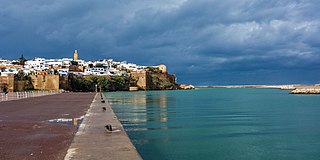
Rabat is the capital city of Morocco and the country's seventh largest city with an urban population of approximately 580,000 (2014) and a metropolitan population of over 1.2 million. It is also the capital city of the Rabat-Salé-Kénitra administrative region. Rabat is located on the Atlantic Ocean at the mouth of the river Bou Regreg, opposite Salé, the city's main commuter town.

The 2003 Casablanca bombings were a series of suicide bombings on May 16, 2003, in Casablanca, Morocco. The attacks were the deadliest terrorist attacks in the country's history. Forty-five people were killed in the attacks. The suicide bombers came from the shanty towns of Sidi Moumen, a poor suburb of Casablanca. That same year, Adil Charkaoui, a Casablanca-based resident who was issued a Security Certificate in Montreal, Canada, was charged with supporting terrorism, and rumours allege he may have played a financial role in the bombings.

Moroccan Jews constitute an ancient community. Before the founding of the State of Israel in 1948, there were about 250,000 to 350,000 Jews in the country, which gave Morocco the largest Jewish community in the Muslim world, but by 2017 only 2,000 or so remain. Jews in Morocco, originally speakers of Berber languages, Judeo-Moroccan Arabic or Judaeo-Spanish, were the first in the country to adopt the French language in the mid-19th century, and unlike the Muslim population French remains the main language of members of the Jewish community there.

The history of the city of Casablanca in Morocco has been one of many political and cultural changes. At different times it has been governed by Berber, Roman, Arab, Portuguese, Spanish, French, British, and Moroccan regimes. It has had an important position in the region as a port city, making it valuable to a series of conquerors during its early history.
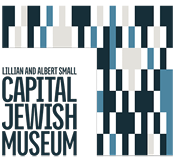
The Capital Jewish Museum, officially the Lillian & Albert Small Capital Jewish Museum, is a historical society and its planned museum in Washington, D.C., focused on the history of Jewish life in the American capital city and the surrounding Washington metropolitan area.

The Zagreb Synagogue was the main place of worship for the Jewish community of Zagreb in modern-day Croatia. It was constructed in 1867 in the Kingdom of Croatia-Slavonia within the Austrian Empire, and was used until it was demolished by the Ustaše fascist authorities in 1941 in the Axis-aligned Independent State of Croatia.

Moroccan Jews are Jews who live in or are from Morocco. A significant Jewish population migrated from Spain and Portugal, after the Spanish Inquisition, to the area and settled among Arab-Berbers. They were later met by a second wave of migrants from the Iberian peninsula in the period which immediately preceded and followed the issuing of the 1492 Alhambra Decree, when Jews were expelled from Spain, and soon afterward, from Portugal. This second wave of immigrants changed Moroccan Jewry, which largely embraced the Andalusian Sephardic liturgy, to switch to a mostly Sephardic identity.
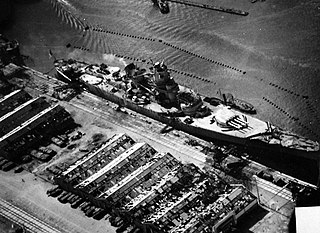
The Naval Battle of Casablanca was a series of naval engagements fought between American ships covering the invasion of North Africa and Vichy French ships defending the neutrality of French Morocco in accordance with the Second Armistice at Compiègne during World War II. The last stages of the battle consisted of operations by German U-boats which had reached the area the same day the French troops surrendered.

Joseph Ettedgui (1936-2010), usually known simply as Joseph, was an influential London-based retailer and founder of the Joseph retail empire. After his death, the chair of the British Fashion Council Harold Tillman described him as: "a great designer, retailer and entrepreneur". Le Figaro fashion editor Godfrey Deeny has described him as: "one of the half dozen greatest fashion retailers in the past half-century".
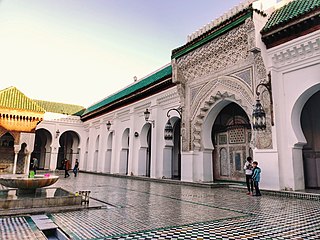
Fez or Fes is a city in northern inland Morocco and the capital of the Fès-Meknès administrative region. It is the second largest city in Morocco, with a population of 1.11 million according to the 2014 census. Located to the north west of the Atlas Mountains, Fez is linked to several important cities of different regions; it is 206 km (128 mi) from Tangier to the northwest, 246 km (153 mi) from Casablanca, 189 km (117 mi) from Rabat to the west. The Trans-Saharan trade route may be accessed via Marrakesh, 387 km (240 mi) to the southwest of Fez. It is surrounded by hills and the old city is centered around the Fez River flowing from west to east.

David Serero is a Moroccan-French baritone opera singer, actor, producer, stage director, philanthropist and Ambassador of the Arts. He has played more than 1,500 concerts worldwide, and lead roles in opera, theater and musicals such as Cyrano (Cyrano de Bergerac), Shylock, Othello (Othello), Nabucco (Nabucco), Don Quixote, Richard III, Napoleon Bonaparte, Escamillo (Carmen), Enrico, Amonasro (Aida), the title roles of Don Giovanni and Rigoletto and starred in more than 100 films and TV series. He has toured in America, Europe, Middle East, Asia and Russia. In 2017, David Serero was honored in Marquis Who's Who for outstanding achievement in the entertainment world and for his contribution for the betterment of contemporary society. He is a member of the Recording Academy (Grammys) and the Television Academy of Arts & Sciences (Emmys), for which he is both a voting member. In 2019, he is named one of the top most influential Moroccans by airline Royal Air Maroc, and received the 2019 Albert Nelson Marquis Lifetime Achievement Award. In 2020, he receives the Award for Diversity by the Unesco. He wins the 2020 BroadwayWorld Awards for Best Performer of the decade, Best Producer of a Musical of the decade, Best Producer of a Play of the decade. The Mayor of New York, Bill de Blasio, awards him with the Certificate of Recognition for his contributions to the City of New York.

Israeli-Moroccan relations are the official relations between the State of Israel and the Kingdom of Morocco.
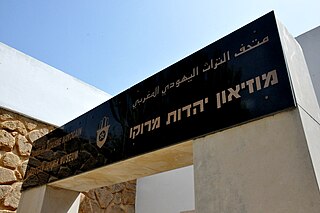
The Museum of Moroccan Judaism is a museum of Jewish life in Morocco in Casablanca, Morocco.

Second Purim, also called Purim Katan, is a celebratory day uniquely observed by a Jewish community or individual family to commemorate the anniversary of its deliverance from destruction, catastrophe, or an antisemitic ruler or threat. Similar to the observance of the Jewish holiday of Purim, Second Purims were typically commemorated with the reading of a megillah (scroll) describing the events that led to the salvation, specially-composed prayers, a festive meal, and the giving of charity. In some cases, a fast day was held the day before. Second Purims were established by hundreds of communities in the Jewish diaspora and in the Land of Israel under foreign rule. Most Second Purims are no longer observed.

The architecture of Casablanca is diverse and historically significant. Casablanca, Morocco's economic capital, has a rich urban history and is home to many notable buildings in a variety of styles. Throughout the 20th century, architecture and urban development in Casablanca evolved in a way that was simultaneously specific to the city's contexts, and consonant with international ideas.
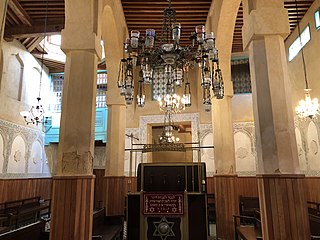
The Al Fassiyine Synagogue or Slat Al Fassiyine is a synagogue located in the Mellah of Fes el-Jdid, within the historic medina of Fez, Morocco. The Slat al-Fassiyine Synagogue was one of the few synagogues where the non-Sephardic rituals of the toshavim continued up until the 20th century.


















